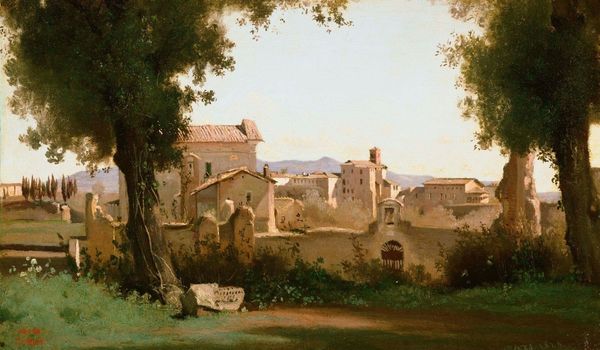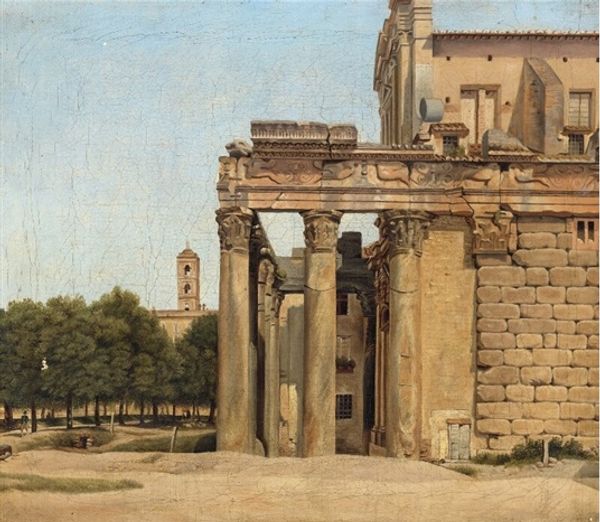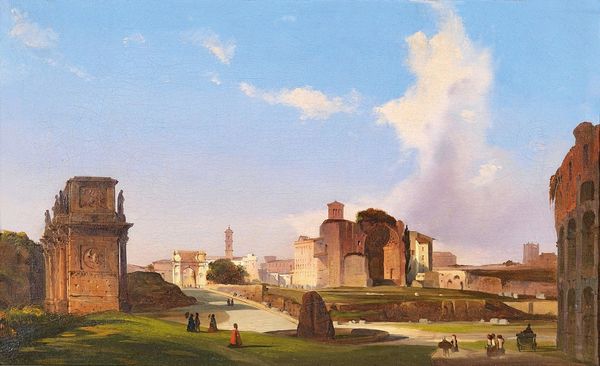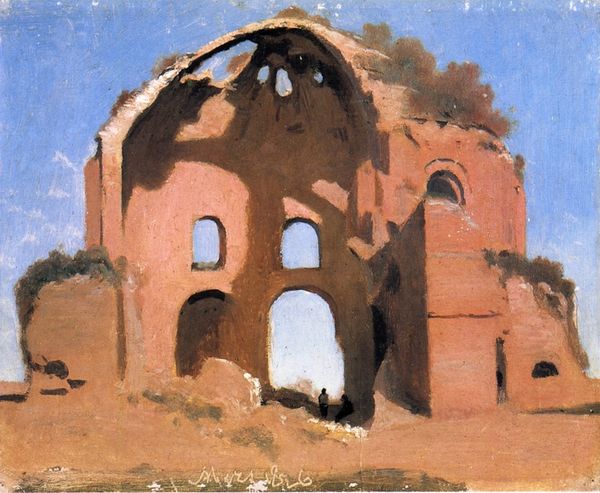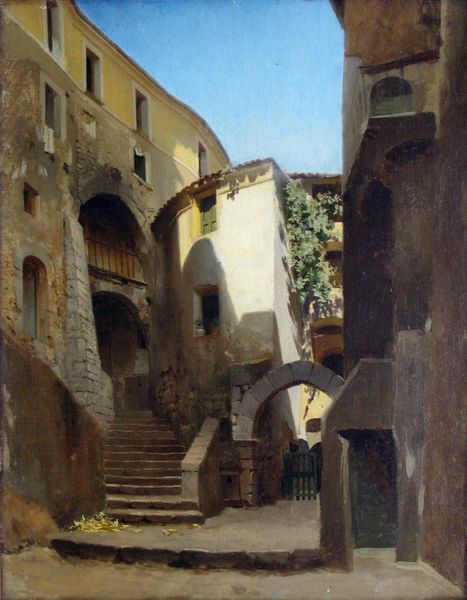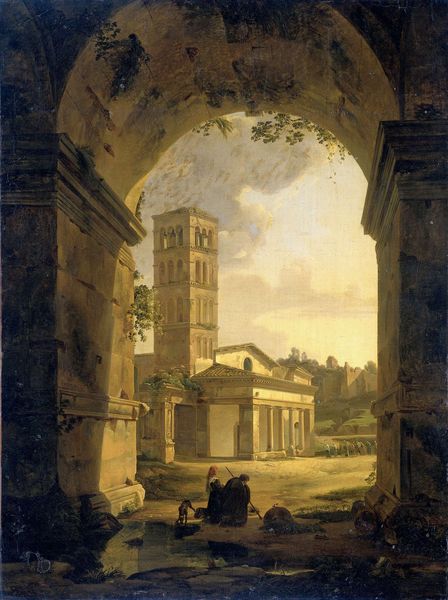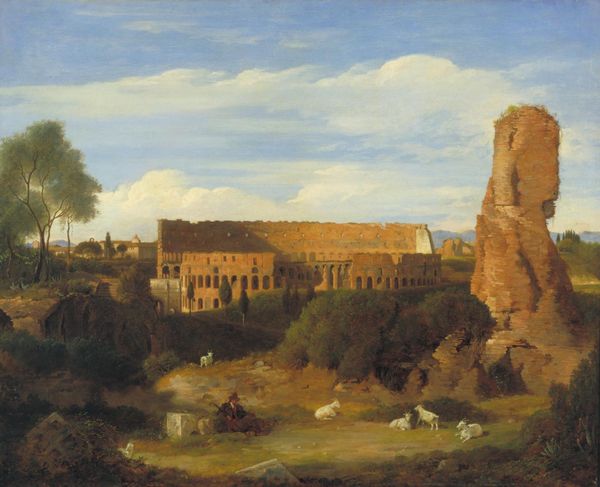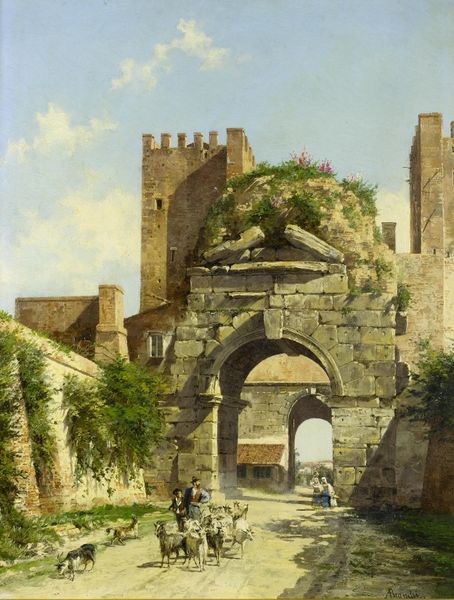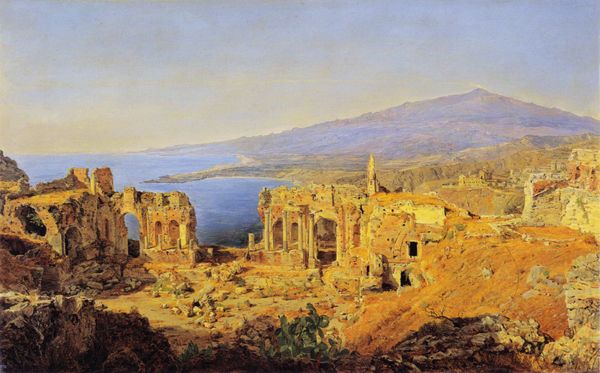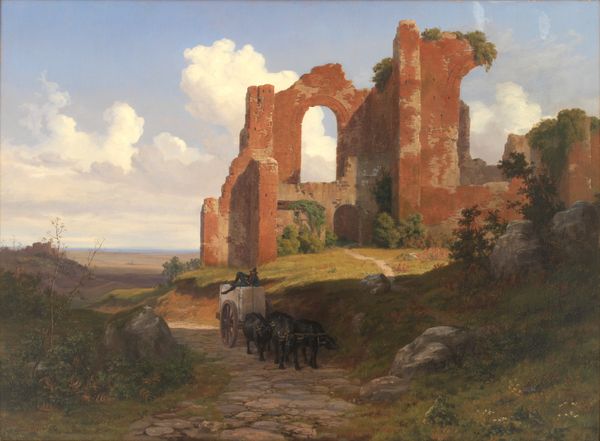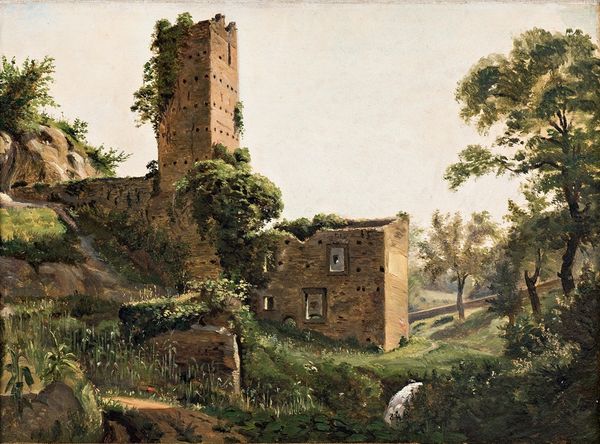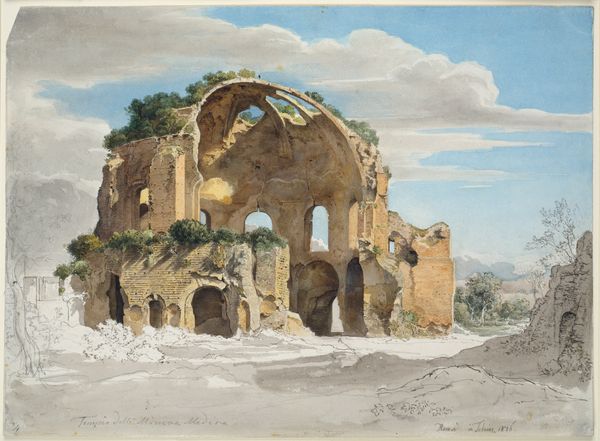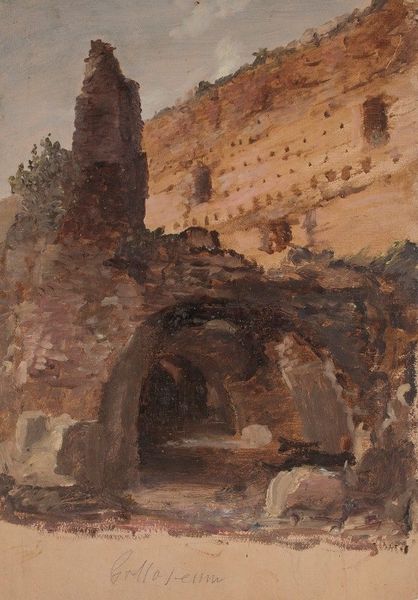
painting, plein-air, architecture
#
urban landscape
#
painting
#
plein-air
#
landscape
#
romanticism
#
arch
#
cityscape
#
history-painting
#
academic-art
#
watercolor
#
architecture
#
realism
Copyright: Public domain
Christen Kobke painted this tranquil scene of the Gateway in the Via Sepulcralis in Pompeii using oil on canvas. The ruined city provides an evocative setting for thinking about history and mortality. Painted in the 1840s, this work reflects a wider European fascination with classical antiquity. It reminds us that Pompeii was a popular destination for artists and intellectuals interested in the past. Kobke’s painting offers a glimpse into the archaeological explorations that were reshaping European understandings of the Roman Empire. But it also provides a commentary on the nature of ruins. The painting prompts us to consider the ways in which later cultures can project their own values and assumptions onto the fragments of earlier societies. To understand the painting better, historians consult not only art historical sources, but also travel accounts, archaeological reports, and historical surveys. These sources help us to reconstruct the cultural and intellectual context in which Kobke produced his work. The meaning of art is always contingent on its historical and institutional setting.
Comments
No comments
Be the first to comment and join the conversation on the ultimate creative platform.
